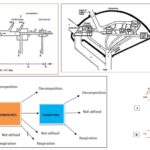Degeorge syndrome
Degeorge syndrome
Please login to submit an answer.
What is DiGeorge Syndrome?
DiGeorge syndrome, also known as 22q11.2 deletion syndrome, is a primary immunodeficiency disorder caused by a microdeletion on the long arm of chromosome 22 (at position q11.2).
It affects the development of several body systems and leads to a wide range of clinical features.
The syndrome is congenital (present at birth) and can vary widely in severity, with some individuals showing mild symptoms and others having life-threatening complications.
History
First described in the 1960s by Dr. Angelo DiGeorge, who identified a pattern of thymic hypoplasia, hypoparathyroidism, and congenital heart defects.
The genetic basis (22q11.2 deletion) was identified later with the advent of molecular genetic techniques such as FISH (Fluorescence In Situ Hybridization).
Causes
Caused by a heterozygous deletion of about 3 million base pairs on chromosome 22 (22q11.2 region), which includes approximately 30–40 genes.
Most cases (over 90%) occur de novo (new mutation), but it can also be inherited in an autosomal dominant manner.
Importance in Biology and Medicine
Offers insights into gene dosage effects, developmental biology, and organogenesis.
Studied extensively for its implications in neurodevelopmental disorders, cardiac morphogenesis, and immune system development.
Major Clinical Features
Cardiac abnormalities (e.g., tetralogy of Fallot, interrupted aortic arch, ventricular septal defect)
Thymic hypoplasia or aplasia, leading to T-cell immunodeficiency and increased susceptibility to infections
Hypocalcemia due to parathyroid gland hypoplasia
Craniofacial anomalies, including cleft palate, micrognathia, and low-set ears
Developmental delays and learning difficulties
Psychiatric disorders, such as schizophrenia, ADHD, and anxiety
Palatal abnormalities, including velopharyngeal insufficiency and submucosal cleft
Diagnosis
Confirmed by molecular genetic testing, especially FISH or microarray analysis to detect the 22q11.2 deletion
Prenatal diagnosis is possible through amniocentesis or chorionic villus sampling if there is a known familial case
Management
No cure, but symptom-specific treatment is provided
Cardiac surgery for congenital heart defects
Calcium and vitamin D supplementation for hypocalcemia
Thymus transplant or immunoglobulin therapy for severe immunodeficiency
Speech therapy, educational support, and behavioral therapy for developmental and psychiatric issues
Regular multidisciplinary monitoring involving cardiology, immunology, endocrinology, and developmental pediatrics
Prognosis
Prognosis depends on the severity of symptoms, especially heart defects and immune dysfunction
With early diagnosis and supportive care, many individuals can lead relatively normal lives
Synonyms
22q11.2 deletion syndrome
Velocardiofacial syndrome (VCFS)
Conotruncal anomaly face syndrome
Catch22 syndrome (mnemonic: Cardiac abnormality, Abnormal facies, Thymic aplasia, Cleft palate, Hypocalcemia – 22q11 deletion)
- Share on Facebook
- Share on Twitter
- Share on LinkedIn
Helpful: 0%




